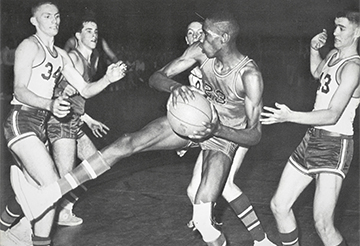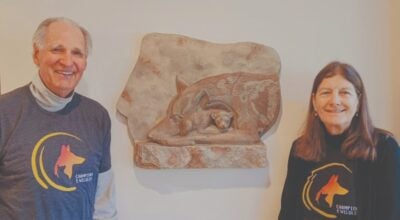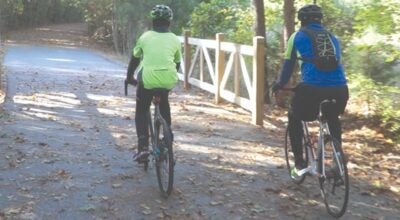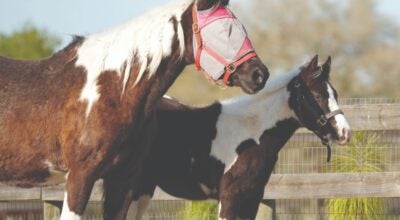Journey of a lifetime
Published 11:00 pm Wednesday, January 31, 2018

- Hawthorne Wingo (photo by Lucas Via)
From Tryon to the NBA with Hawthorne Wingo
Harthorne Wingo gingerly lifted his 6-foot-6 frame from the chair in the Brooklyn donut shop where he spends part of nearly every day, reaching for his nearby cane while standing.
New York City baked on a warm summer’s day, an afternoon where a younger Wingo might well have been found at Rucker Park, the legendary Harlem basketball court where NBA stars routinely traded elbows and baskets with playground legends. Wingo would become one of those legends, deemed one of the 50 greatest to ever play in the Pro League there, the Rucker becoming the stepping stone to a professional career.
You can leave Polk County and get to Madison Square Garden by car in some 11 hours, but to make that journey and actually step onto the famed Garden floor? Wingo did it in five years, going from a street corner in Tryon to donning a New York Knicks uniform, an unlikely journey from dirt courts to playing alongside the world’s best. Along the way he collected an NBA championship, plus titles on two other continents, and even earned a place in pop culture with a mention in the Beastie Boys song “Lay It On Me” (“My favorite New York Knick was Harthorne Wingo. . .”).
Not that the only NBA player that Polk County has ever produced dwells much on past fame these days. Wingo’s more worried about his arthritic right hip that needs a replacement, plus costly rehab to follow. The new hip would allow him, even at age 70, to spend more time back on basketball courts, to share his story with New York City youth, maybe to even travel back to the hometown he still loves.
It’s another challenge to overcome in a life that has been filled with them.
Breaking the color barrier at Tryon High School meant a lot less walking every day for Harthorne Wingo.
Walking to Edmund Embury School every day from the home he shared with 14 brothers and sisters meant going down one long hill, slogging up another and then doing the reverse at day’s end. On cold mornings, the end of the walk rarely meant the end of the chill; finding a warm room at Embury in the winter was a luxury.
So when Tryon City Schools decided to reassign a group of African-American students to Tryon High, even before court-ordered integration forced them to drop all racial barriers, Wingo welcomed the opportunity to make the shorter trip each day.

Harthorne Wingo became the first African American to play basketball at Tryon High School. (Tryon High School photo courtesy Pat McCool)
As it so often does, sports helped ease the transition to the previously all-white campus.
“I remember one day a friend of mine who lived down the hill, Bill Brown, came to me and said ‘Harthorne, let’s go around the corner to the gym (the old gym at Tryon High). Some guys are down there playing ball, and let’s see if we can go play with them,” Wingo said.
“We went down there, and we went in the gym and we stood around in the corner. There was one of the greatest basketball players to ever come out of Tryon, a guy by the name of Duke Fisher. He was great. Duke and some other guys, there were about five or six other guys, they didn’t have enough for a full court. So Duke said, ‘Hey, c’mon, you guys wanna play?’ So we went out there and played.
“At that time, it was the beginning of integration. We played, and after the game, Duke said, ‘Hey, we’re going to be out here tomorrow. You guys, come back and we’ll be out here playing.’ We played all that summer at the old gym with those guys. Two years later, they integrated schools, and it wasn’t a problem because I knew most of the players anyway.”
Wingo would enter Tryon High as a senior, leaving behind friends and basketball teammates at Embury. He initially joined the Tigers’ football team, but “flunked out,” in his words, and left the squad. Tryon High basketball coach Bill Barry soon pulled Wingo aside.
“Mr. Barry came to me and said ‘Don’t worry about it. I want you to go to the gym every day instead of going to football practice. Phillip Culbreth and Bill Stevenson, they’ll be up there lifting weights, and I want you to go lift weights with those guys.’ So, I went up there every day and I met Bill and Phil,” Wingo said. “Very nice guys, and we became good friends.”
Wingo would be the only African-American starter on the Tigers’ roster that season, joining a team already headlined by Tryon standouts Andy Hancock and Bill Metcalf. He didn’t play in the team’s season opener at Rosman, his first action coming at Brevard with a 20-point effort in a 54-53 win. Still adjusting to their new teammate, the Tigers meandered to a 3-3 record before catching fire, winning 15 straight games and the Foothills Conference regular season and tournament championships. Wingo and Hancock earned all-conference honors, with Metcalf a second-team selection.
But the team’s hopes for a state championship would end quickly in a 59-55 loss to Bakersville High School in the first round of the Class A district tournament. Wingo capped his season with 17 points, 29 rebounds and six blocked shots in that loss, which left the Tigers with an 18-4 record in their first season with an integrated roster.
Wingo, the trailblazer, could not have enjoyed the season more.
“I did hear a few obscene names being called, but it didn’t matter to me because my teammates were fully behind me, 100 percent,” he said. “They had no problems.
“Bill and Phil were always there. Every place we went to play, Bill was on this side of me and Phil was on this side. Those guys were really great guys, and I never had a chance to thank them. They made me feel a lot better because every place we went, I was (one of the few blacks) in the conference at that time, in the gym, period. But it didn’t matter that much because all the guys supported me. They all accepted me, and Coach Barry was wonderful. He was great. I missed my teammates across town, but these guys made it a lot easier to deal with. Plus, we won a lot of games.”
Barry’s role with his new star didn’t end with the loss to Bakersville. He worked tirelessly to find a college home for Wingo, a place for him to continue his basketball career while pursuing a degree. The two spent several Saturdays visiting college campuses until Wingo, facing at least a year of college prep school before attending any university, decided he had spent enough time pursuing a four-year option. He spent a year at Friendship Junior College, then returned home, unsure of what to do or where to go next.
The answer, and a new challenge, would soon arrive.
From the corner of Lockhart Road and School Street, you can peer down the hill at the former Tryon High School, now Tryon Elementary School. Turns out you can also see your future there.
Harthorne Wingo sat on that corner and tried to sort out his life, his love for basketball diminished by the year spent in the chaotic, every-man-for-himself world of junior college basketball in the late 1960s, his career plans anything but certain.
“Every day, I’d be sitting out there on the sidewalk, thinking about what I was going to do,” Wingo said. “Then a real nice guy saved my life and got me started playing ball again, a guy by the name of Carroll McKinney. His car rolled by, and he stopped and he said, ‘We want you to play with us, we play in a league down in Spartanburg, a textile league. There’s this big guy, and we need you to take care of him.’ So I went down and I played, and we won, and Carroll got me a job. I had to work there so I could play there.
“I did that for a year, and I thought, this has been good, but I really think I’d like to play more ball, so I decided to come to New York. I got on the Greyhound bus and I came to New York.”
Teammates at Friendship had talked about basketball in New York City, and with an aunt living there, Wingo hopped on the bus and headed north. He expected New York City to be a town just like Tryon, to find people who knew his aunt and could direct him to her house.
“I was at Port Authority and I was waiting on her for about 18 hours,” Wingo laughed. “I made it to Port Authority and I’m from Tryon, North Carolina, and I’m saying wow. I get up here and all I had was an address and no number. I didn’t know how Brooklyn was. I’m thinking small-minded all the time and now there are boroughs and all these people.
“I’m walking around Port Authority for about 10 hours and I ran into a friend from Tryon who worked at Port Authority, a guy by the name of Stanley McClure. He said ‘Harthorne!,’ and I hugged him and I said Stanley, I’m so glad to see you, man.”
Wingo spent the final months of 1968 playing in a winter basketball league, then took his first turn at the vaunted Rucker League the following summer, the run-and-gun ethos of the playground quickly winning his heart.
“For me, it was like somebody takes a stallion out to an open field and lets him go,” Wingo said of Rucker play. “That’s how I felt. It was great. This is what I want to do. That summer, I went and played at the Rucker with a team called Sports Foundation. We had a pretty good team. I was still green. I was learning how to play. After maybe 30, 40 games, it came to me. The game just came to me, and I started doing things I used to think about doing.
“I started playing with great ballplayers. Dr. J (Julius Erving) was playing. Tiny Archibald. Dave Cowens. Bob Love played. Dave Stallworth from the Knicks, Willis (Reed) and all those guys from the Knicks were playing there. I started playing real good. They had an all-star game, and they started calling the people who made the all-star game and said Harthorne Wingo. I was like, oh, man, wow, this is really great. I went and played well. I played real well that summer.”
Wingo’s Rucker stature grew quickly, as did his reputation. In 1970, he accepted an invitation to join the Harlem Wizards, a show team formed in the spirit of the Harlem Globetrotters. Soon thereafter, Stallworth suggested to Knicks head coach Red Holzman that he should check out Wingo. The Knicks steered Wingo to Allentown, Pa., to play in the Eastern League, where he thrived; during the 1971-72 season, Wingo averaged 22 points and 14 rebounds in leading Allentown to a league championship and earning Most Valuable Player honors.
Wingo felt certain that season would be his last in Allentown, but prior to the 1972-73 season, Holzman pulled Wingo aside and told him that he had no place on the Knicks roster for him at that time. He returned to Allentown until February, when he got the phone call that would again change his life and bring his next challenge – the Knicks were waiving first-round draft pick Tom Riker from South Carolina (he would also head to Allentown) and wanted Wingo to take his place.
He signed a multi-year contract on Feb. 1, 1973. The NBA awaited.
You couldn’t throw a basketball in any direction at a New York Knicks practice in 1973 and not hit a legend.
Walt “Clyde” Frazier. Willis Reed. Earl “The Pearl” Monroe. Jerry Lucas. Phil Jackson. Dave DeBusschere. Bill Bradley.
Play ball with those guys? Harthorne Wingo was just happy to be in the building with them.
“It was a like a dream come true because every day, I was looking at my heroes,” Wingo said. “They won the first championship in 69-70, and I was a fan of the Knicks. At that time, all of the away games were on Channel 9, and everybody could get Channel 9, so all of New York watched all the away games. The home games were on cable, but everybody had cable in Harlem. So I watched all the games.
“Every day, I couldn’t believe it. There’s Willis Reed, Jerry Lucas, Walt Frazier, Earl Monroe. Thank you, God. That’s the way I felt.”
Wingo played in 13 regular-season games that season, then saw limited action in three playoff contests as the Knicks captured the NBA championship. His playing time doubled the next season, then doubled again in 1974-75, when he averaged 20 minutes, seven points and six rebounds. He had six double-doubles in the regular season, including 17 points and 16 rebounds in a win at Phoenix, and added 11 points and 10 rebounds in a playoff loss to Houston.
But Wingo’s growing stature on the Knicks roster took a hit with an offseason trade for Spencer Haywood, adding the eventual Hall of Famer to the playing rotation. Wingo’s playing time dropped to nine minutes per game during the 1975-76 season while his knowledge of the business of basketball increased in kind.
“When they brought Spencer in, I was very dejected,” Wingo said. “At the end of the (74-75) season, Red gave me a bonus, gave me a $5,000 bonus. I figured next year would be a great year for me.
“At that time, Red was the coach and general manager. But people were putting a lot of pressure on him because they wanted another championship. They didn’t have time to bring me along. So they sat me on the bench and brought in a big-name player.”
With Haywood in place, Wingo decided after the 1975-76 season to take his talents elsewhere. That destination became Italy, where a guaranteed contract awaited.
It also led to the biggest regret of his career.
“The Knicks put me on waivers, and I came to Manhattan (to his lawyer’s office),” Wingo said. “My agent wanted me to go to Italy, but my lawyer said, ‘come here, I want to talk to you,’ and took me in the back.
“He said, ‘Wingo, (Portland head coach) Jack Ramsey just called me. He wants you to come to Portland and will guarantee you 20 minutes a game. But he can only pay you $35,000.’ That’s what I made my first year, and now it’s four years later.
“I made the wrong move, even though I went to Italy and we won the (European Cup Winners’ Cup), which is one of the Euro championships. We won that two years in a row, but it wasn’t the NBA. It wasn’t the NBA, so I made a wrong move. I just felt so bad because I was playing so good and, boom, you’re not playing again. I was back to the bench again and it got the best of me.”
Wingo conquered the challenges of international basketball. He played four seasons in Italy, averaging 20 points and 12 rebounds for two different teams and being part of the back-to-back Winners’ Cup teams (the Winners Cup being a European tournament for teams that finished second in their national leagues). Seasons in Switzerland and South America followed. He helped lead Ferro Carril Oeste, an Argentina-based professional team, to the South American Club Championship title in 1982, beating Sirio and legendary player Oscar Schmidt in the process.
Wingo enjoyed it all – with one caveat.
“Italy was good,” he said. “We traveled all throughout Europe. Spain, France, Italy, Bucharest in Romania. Had a great time. To win the Euro was good. We were the first Italian team to go back-to-back. That’s the second-best team in Europe. First is the Cup of Champions.
“I enjoyed it because I had the chance to play the whole game. I did great. I had a double-double, 21 points and almost 13 rebounds, leading scorer and rebounder. That’s what I wanted more than anything, to play. But, it’s not the NBA. No matter where you go, it ain’t the NBA, simple as that.”
It is the heart of winter in New York City, and Harthorne Wingo is hurting.
The arthritis in his right hip has steadily worsened, and an aching hip on a cold January day is never going to be anything but problematic.
Wingo has dealt with the challenges of New York City since his retirement in 1983, and he admits he initially didn’t handle them well. Unable to find a job in basketball upon his return to America, Wingo instead found one of life’s detours, dealing with financial and substance abuse issues over the next few years. A rehabilitation visit in the early 1990s helped Wingo beat the latter, but an assortment of health issues, including his right hip, have made life challenging since.
Wingo has taken it all in stride.
“If I had retired and stayed in Italy, I probably would have done real well, because they knew me,” Wingo said. “They had a chance to really see me, and they saw me when I excelled. But when I came back to the United States, the Knicks had changed their organization completely. The only person still affiliated when I first came back was Red Holzman. I really didn’t have any contacts with the Knicks.
“Took me a while, but things go on. Life goes on.”
There is hope for 2018. Wingo is scheduled to meet with doctors in early January to finally schedule his hip replacement. “I’m ready,” he said. “I’m tired of this pain.” He’s unsure of how he’ll pay for the complete rehabilitation after the surgery; friends have started a GoFundMe account to help with those bills.
What Wingo is certain of is that he’ll meet those challenges head-on, as he has the others in his life, all thanks to the lessons learned on Lockhart Road.
“My upbringing and how I was raised,” Wingo credits for the accomplishments of his life. “I wasn’t raised by my parents. The lady who raised me (Lula Cowins) was a hard-working lady. She taught me responsibility and how to follow a process. There was nothing too big or too small to handle. I miss Tryon. I love Tryon. That was the greatest thing ever, to grow up in Tryon, North Carolina. I loved that place. Lot of good people, lot of good friends.
“I’m waiting on a hip replacement, and once I get that done, I’m going to get back out there,” Wingo said. “The last two years I’ve been living in Brooklyn and have done a few things here and there, but with my hip I can’t really get around and move like I what like to, get out there and demonstrate for the kids. Tell them where I came from, tell them the old-school ways.” •
By Andy Rhinehart
Andy Rhinehart is the force behind PolkSports.com and PolkStudents.com, and is an award-winning journalist with more than a decade of experience in daily and non-daily newspapers. He is also a customer success manager at Parse.ly.





